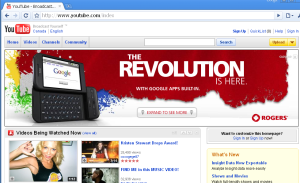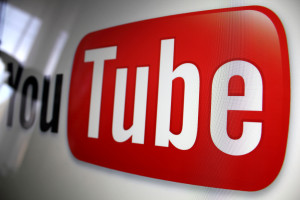The Power of YouTube
Published on October 5, 2015, at 7:40 p.m.
by Madalyn Atherton.
It’s no secret that these days, our attention spans are shorter. We live our lives 140 characters at a time and barely have any patience for a five-second ad before a video. Despite that, the rise of tech has “improved our ability to multitask and concentrate in short bursts.”
Instead of bemoaning millennials’ obsession with tech and innovation, companies need to adapt to the times and start marketing themselves and their products to the new generation. Mobile is only on the rise, and there’s no sign of it stopping.
YouTube ups the advertising game
YouTube is one of the newest playing fields for advertisers.
“It’s more interesting and accepted and designed for a mobile community,” said Sabrina Horn, founder, president and CEO of HORN Group. “More people get their info through social channels, anytime, any day.”
Around 70 percent of people would rather learn about products through content than traditional ads. In-stream ads have the highest click-through rate of any kind of ad at 0.46 percent. The same PointRoll study showed that adding video to ads improves performance.
 YouTube was founded in 2005, but it seems to be a platform made for the smartphone. The number of hours people spend watching YouTube on mobile is up 100 percent from last year, and more than half of YouTube views come from mobile devices.
YouTube was founded in 2005, but it seems to be a platform made for the smartphone. The number of hours people spend watching YouTube on mobile is up 100 percent from last year, and more than half of YouTube views come from mobile devices.
In 2014, 40 percent of YouTube’s traffic came from mobile. That’s up from 25 percent the year before, and 6 percent the year before that. Watching YouTube on the go is so much easier, and as display resolution on smartphones improves, mobile traffic will continue to increase. It has over 1 billion active users each month. If all the users formed a country, it would be the third largest in the world.
The power of audience
The power of the platform lays in the audience, according to Randall Huffaker, a University of Alabama advertising and public relations instructor. This is an audience that has chosen to be there and what content they want to watch. They opt in to these content creators and the ads.
“On YouTube, people are seeking these content creators out. They’re a more loyal audience,” Huffaker said, going on to explain how Twitch, a platform similar to YouTube but only for video game videos, proves audience loyalty.
“The power of that! Anyone can become famous if they come up with something people want to watch,” Huffaker continued.
The Internet is a place of endless possibility, driven entirely by viewers. All the power and control is in the hands of the audience, and that creates a kind of rabid loyalty that is totally unique. Platforms and companies need to give their audiences a chance to have a hand in content creation like content creators on YouTube do.
Watch any video from a popular YouTuber, and chances are they’ll have a spiel about what the viewers want to see next. A video intro familiar to even a casual viewer is, “This video was highly requested . . .” YouTube content creators have perfected communicating with their audiences. Their fans talk, and they listen. There’s an amazing amount of power in just listening to the audience and doing something about it.
Brands have learned to capitalize on this almost manic loyalty. Cosmetic, hair care and lifestyle companies have pounced on beauty vloggers. Video game companies are no different. The most popular YouTuber is PewDiePie with 39,424,425 subscribers and over 10 billion video views. Thirty-nine million people have opted in to watch this guy play video games, among other things. There is so much power in that kind of influence.
The importance of transparency
An important aspect to sponsored videos, which all of these YouTubers make, is transparency. “If it comes across as being disguised it’s going to be ignored right off the bat,” Horn said.
“We’re jaded now. If you see someone trying to hide that they’re sponsored, we think their opinion is less valid because they’re trying to hide the connection,” Huffaker said.
Sponsored videos are interesting. They’re necessary in one way — they allow YouTubers to get paid to create content and dedicate their lives solely to YouTube. Since they’re focused on content creation, their videos are better quality and viewers approve. On the other hand, some viewers distrust sponsored videos. The successful channels make it a point to tout their honesty and stick to it at all costs. If that trust is breached, the audience would never forgive them.
Even though a YouTuber may speak negatively about a brand or product, that brand should never try to convince the creator to lie for them. The audience will find out, and it won’t just be the YouTuber who loses credibility. If a company was thought to be lying to viewers, it would automatically lose the trust of its audience.
These days, with all the social media and the 24-hour news cycle, it’s not just journalists who make up the fifth estate. Anyone has the power to be a reporter. It would only take one viewer finding out the YouTuber or company had lied, and it would all be over.
 The rise of native and in-stream ads
The rise of native and in-stream ads
Native advertising and in-stream ads have only picked up within the past few years. “People were trying to make sense of social media,” Horn said. People were so unsure of what YouTube was or if it would stick since it was so niche. “Social media really needed to fill out and mature before YouTube could really take off,” Horn noted.
Huffaker explained that native advertising on YouTube is so successful because of all the touch points it has. A company can link a video to its Facebook, to its Twitter and so on. “People weren’t sure [about YouTube],” he said. After the first few years, when the momentum kept on building and these content creators were getting more and more famous, advertisers were more comfortable jumping on board.
“Native is another way [to advertise]. Eventually we’ll be immune to native as well, but right now it’s unique and completely different. It’s off the wall. Where it goes, we’ll find out,” Huffaker said.
He went on to predict that making videos might be getting a little too easy. There are so many downloadable programs that can make a YouTube video in five minutes. Once it becomes so mainstream and easy, the quality of content tends to go down and people move on.
“As long as it stays creative and fun, YouTube will be around for a while,” Huffaker said.
Opinions
Comments are closed.





Permalink
Post comment
Great article Madalyn. I agree with you that YouTube is a revolutionary form of social media in many different ways. I believe that all your points about advertising on YouTube are interesting. But I personally believe that YouTube was not just created for advertising or for product endorsement. YouTube is also powerful because it is an easily shared and readily available form of social media that is vastly different than Twitter or Instagram. YouTube is powerful in the sense that the type of media that can be shared is not limited. Twitter is limited to 140 characters a tweet and Instagram is only photo capable. YouTube can be used by educators for teaching purposes, comedians and musicians to network their talents all over the world, and various news outlets to communicate to larger audiences through videos, and as you mentioned another method of advertisement. This alone would arguably make it the most powerful form of social media I believe we have access to.
PermalinkPost comment
Good piece, Madalyn. Advertising within YouTube videos has definitely spiked over the past few years, and your interviews with Horn and Huffaker gave new insight for me as to how this kind of advertising works from the side of the advertiser, not just from the side of the viewer. I agree that if YouTube can keep its model creative and fresh, not only will it be around as an advertising platform for many years, but as a website in general. However, at the same time, I would be interested to see if there is a difference in traffic and brand engagement between videos where the advertisements come before the video itself and those where they are expressed within the video itself. I think that many times if we get the ability to skip an ad when it comes before a video, we take the opportunity to do so. As PR professionals, one of our primary goals is to target and engage our key publics. However, if a key public sees that “Skip Ad” option and takes it, then we have to change either our strategy or our content choices to make sure we’re making that contact. Therefore, as YouTube matures as a platform, we’ll have to keep an eye on how advertising changes with it and adjust our own strategies as to how to use it as well.
Permalink